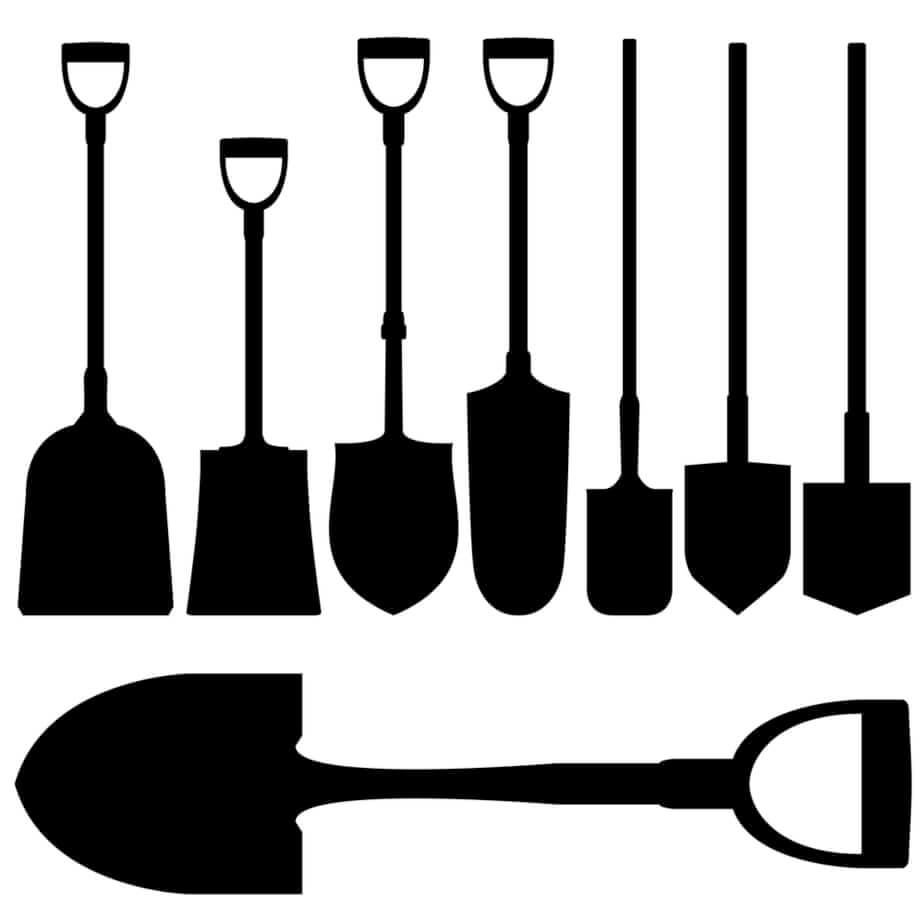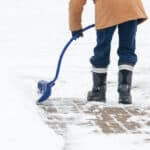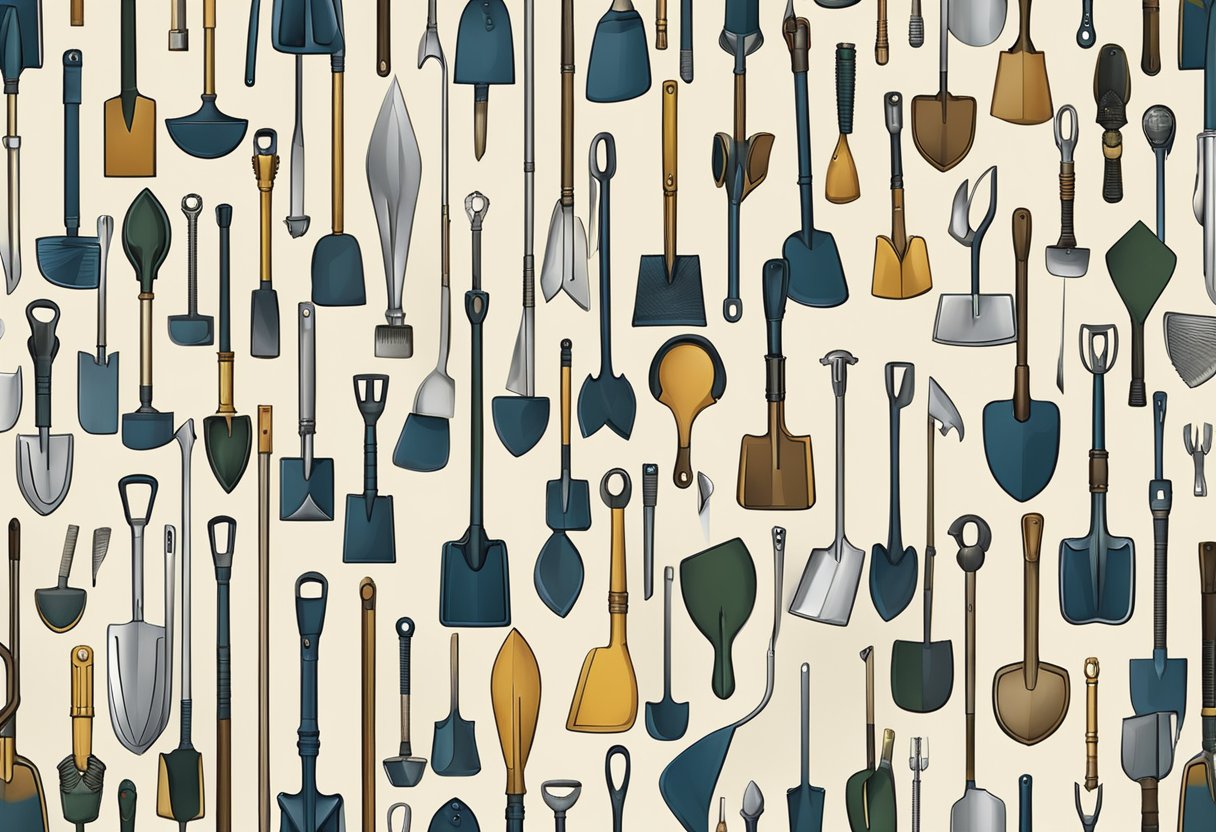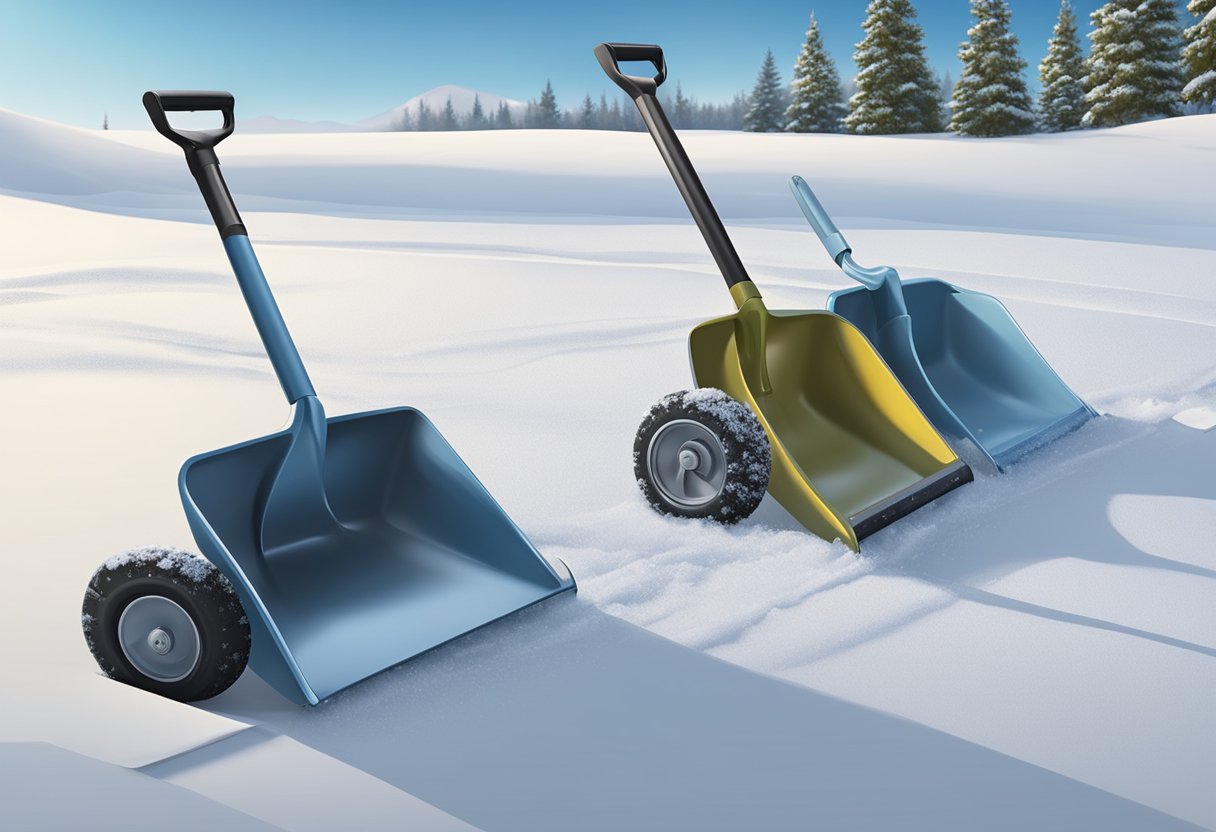Every shovel has what is called a size number on the side of the blade.
This size number denotes three things:
- The size of the shovel blade.
- What terrain you can use the shovel on.
- The shovel’s maximum capacity.
Table of Contents
The Size Of The Blade
The overall understanding of the number on a shovel relates to the size of the blade. Shovel sizes range from 00, 0, 1, 2, 3, 4 depending on the type of shovel, but what does this mean?
To put it into perspective, a 0 shovel blade size is generally 6.5 inches wide x 7.5 inches long compared to a number 4, whose dimensions are 14.5 inches wide x 15.5 inches long.
The sizes given above are general, as each manufacturer will have its sizing of the numbers based on the type of shovel being manufactured that is is unique to that manufacturer. With that in mind, below is a chart that will give you basic dimensions related to a shovel designed for digging a hole or moving gravel and grain.
| SHOVEL SIZE NUMBER | WIDTH (in.) | LENGTH (in.) | WIDTH (cm.) | LENGTH (cm.) |
| 0 | 6 | 7.5 | 15.24 | 19.05 |
| 00 | 7 | 9 | 17.78 | 22.86 |
| 1 | 8.5 | 11 | 21.59 | 27.94 |
| 2 | 9 | 12 | 22.90 | 30.48 |
| 3 | 11 | 12 | 28.50 | 30.48 |
| 4 | 12 | 12 | 30.48 | 30.48 |
| 5 | 13.5 | 12 | 34.29 | 30.48 |
| 6 | 14.5 | 12 | 36.83 | 30.48 |
| 7 | 15 | 13 | 38.10 | 33.02 |
| 8 | 15.5 | 13 | 39.37 | 33.02 |
Please be aware that a No. 2 sand shovel used to make sandcastles and a No. 2 spade used to dig a hole will differ in appearance, as you can see in the pictures below.
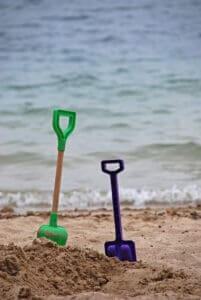
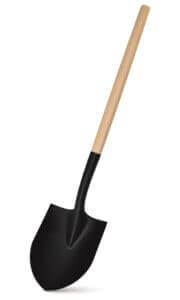
What Terrain You Can Use the Shovel On
What relationship exists between the shovel number and the terrain you are shoveling?
Well, there are three major types of shovels, each designed for a specific purpose:
- blades that have a shaft that can be of varying lengths and has a D-shaped handle. These are used for most digging jobs and are suitable for snow removal, moving soil, and shifting sand.
- an A-shaped blade on a shovel, also known as a spade. This type of shovel is used when you need to move material close to your feet. So this type of blade is excellent when digging a hole, gardening, or planting flowers in an area that is not elevated.
- blades with a straight handle attached are great for digging in tight spots or creating narrow trenches that you don’t have much room to maneuver freely. Examples include the roots of a tree or between flagstones on a patio.
Okay, so some shovels are better at digging up the garden than others, but what about the numbers? Again, if you refer back to the size chart above, the relationship becomes clear.
For example, a number 4 shovel would not make a great shovel for digging a hole as the blade is generally 12 inches wide and 12 inches deep. However, a shovel that is 12×12 would be ideal for shoveling coal, sand, or gravel due to its length and width.
In today’s shovel market, it is hard to find a number 4 or higher shovel. So instead, most people utilize 00 – 3 shovel blades to perform the tasks they require. The 00 – 3 shovels are the most versatile given their size, and the ability to move terrain with minimal effort is maximized.
A shovel’s blade size is not the only consideration in using a 00 – 3 shovel. There is also the material of the shovel’s blade to consider and the load the shovel can move.
Below is a list of terrains/shovel no. chart. based on the material the shovel is made from.
| SHOVEL SIZE NUMBER | TERRAIN FOR PLASTIC SHOVELS | TERRAIN FOR ALUMINUM SHOVELS | TERRAIN FOR STEEL SHOVELS |
| 0 | SNOW, SAND | LOOSE DIRT, GRAVEL, GRAIN | LOOSE DIRT, STONES, COAL, GRAVEL |
| 00 | SNOW, SAND | LOOSE DIRT, GRAVEL, GRAIN | LOOSE DIRT, STONES, COAL, GRAVEL |
| 1 | SNOW, SAND | LOOSE DIRT, GRAVEL, GRAIN | LOOSE DIRT, STONES, COAL, GRAVEL |
| 2 | SNOW, SAND | LOOSE DIRT, GRAVEL, GRAIN | LOOSE DIRT, STONES, COAL, GRAVEL |
| 3 | SNOW, SAND | LOOSE DIRT, GRAVEL, GRAIN | LOOSE DIRT, STONES, COAL, GRAVEL |
| 4 | SNOW | HARD PACKED SOIL, GRAVEL, GRAIN | HARD PACKED OR ROCKY SOIL, STONES, COAL, GRAVEL |
| 5 | SNOW | HARD PACKED SOIL, GRAVEL, GRAIN | HARD PACKED OR ROCKY SOIL, STONES, COAL, GRAVEL |
| 6 | SNOW | HARD PACKED SOIL, GRAVEL, GRAIN | HARD PACKED OR ROCKY SOIL, STONES, COAL, GRAVEL |
| 7 | SNOW | HARD PACKED SOIL, GRAVEL, GRAIN | HARD PACKED OR ROCKY SOIL, STONES, COAL, GRAVEL |
| 8 | SNOW | HARD PACKED SOIL, GRAVEL, GRAIN | HARD PACKED OR ROCKY SOIL, STONES, COAL, GRAVEL |
The Shovel’s Maximum Capacity
When you’re looking at what the number on a shovel means, the higher the number does not correlate to it being able to handle more weight nor does it mean that the shovel will be heavier or lighter. A shovel’s weight can vary quite easily.
For example, a snow shovel No. 2 blade made from plastic will weigh less than a No. 2 blade made from steel.
Would you use a snow shovel to dig up gravel==well no is the answer as the snow shovel’s blade is too light and will most likely bend or break digging in gravel. A heavier, sturdy material is required for the shovel’s blade to dig up rock, steel preferably, or aluminum.
A shovel can be heavy; anywhere from 1-3 kg or 3 lbs to 6.5 lbs. So the maximum capacity of a shovel is dependent on the terrain being shoveled, the blade’s material, and the user’s height and ability to lift the load.
The length of the shovel’s shaft and the design of the handle will assist in your ability to lift the load. Your height plays a crucial component in choosing the correct shaft length and handle. Are you looking to have more stability or less strain on your back? If your answer is less strain, consider a longer shaft and a D handle to move your load.
On the other hand, if you answered more stability, then a shorter length shaft and a D handle will meet your needs. I always recommend a D handle. This handle will assist with moving substrate safely in hot, sweaty, and chilly icy conditions by providing you with a good grip on the shovel.
To keep the shovel’s weight to a minimum, purchase a shovel with a fiberglass shaft and handle instead of wood. If you like a wood handle, try to stick to durable and strong wood such as ash. You can purchase shafts and handles made from carbon fiber, which is exceptionally light and durable, though they come at a price.
If you are looking to understand the difference between shovel blades further, check out our guide Transfer Shovel vs. Digging Shovel: 4 Key Differences

